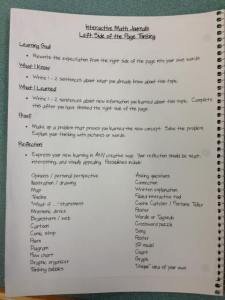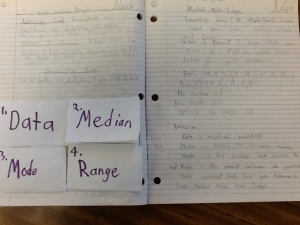 |
| Example of student persuasive writing during Literacy Centers |
 |
| Students ready to show their expertise at our Open House |
Throughout the week, students worked on their persuasive letters to their parents and used the Teacher and Writing Center during Literacy Centers time to add more ideas. When we completed our persuasive letters, we sent them home to our families. Students were tasked to read their letter to their parents with the hope that the letter might sway them to join us for our Open House. Follow this link to view what their letters sounded like.
 Our after school Open House arrived and an excited group of students arrived in our classroom with their families. Students were enthusiastic to announce their their persuasive writing worked because they were able to convince their families to join us!
Our after school Open House arrived and an excited group of students arrived in our classroom with their families. Students were enthusiastic to announce their their persuasive writing worked because they were able to convince their families to join us!Throughout the classroom visit, our mandate was to have the student voice in our room be the guide. Students led parents around our classroom to show some of the great projects and assignments we have worked on over the past few months. Students used their persuasive reasons to show their families all of the exciting learning in our room.
It was lovely to see the pride by the students and the parent engagement as well. Our class is blooming with tech experts who showed their parents how to scan QR Codes, how to Tweet, how to record on the AudioBoo app, how to log into the Chromebooks and so much more! Students are leading much of the learning that takes place during our Literacy Centers, and our Open House evening highlighted some of the student-led inquiries within our room. For instance, the Teacher Center expert got to show her mom what we can do at the Teacher Center. She even showed her how to record on the AudioBoo app.
The QR Code expert showed his mom how to scan a QR Code! He showed her where some codes are around our room and how to add her thinking to our Padlet using the QR Code link. Please feel free to add your thinking to our Open House Padlet below!
We also had some class tweeters and guest tweeters add to the fun too. Students showcased how to compose a tweet and what we can share on Twitter. The parents were happy to watch their child guide the learning of the evening. It was apparent that many more experts are emerging in our classroom! The idea to have student experts is to allow their voice to dictate how we can post and to show their parents that there is a purpose to the technology in our room. My hope is that students continue to let their student voice shine. They were happy with the opportunity to finally showcase some of their learning to their families. I am grateful for the successful turnout and the parent engagement that evening. My goal is to continue to have my Tech Experts lead the way in our room. They are taking ownership of the tech tools we are so fortunate to have in our classroom, and becoming leaders by demonstrating their strong skills with other eager learners.
HH says:We are going to have much fun to
be with parents in open house also with my lovely teacher.
— Mrs. Ciampa (@MrsCiampaClass) May 8, 2014
 |
| A future tech expert during our Open House! |











